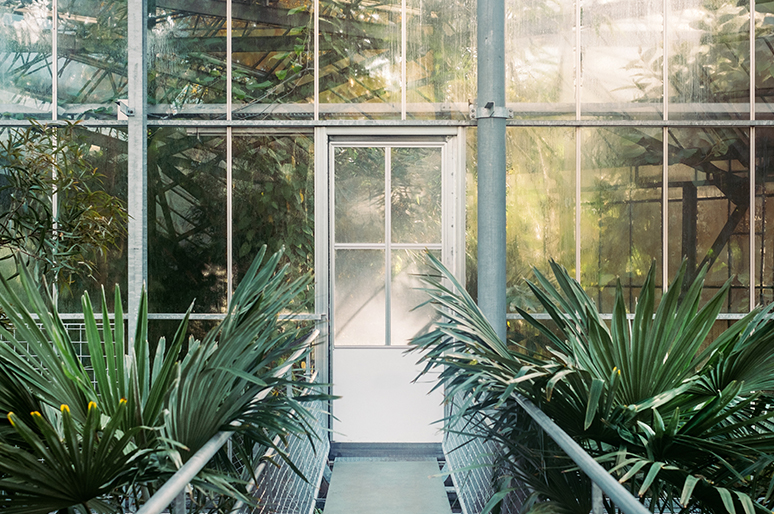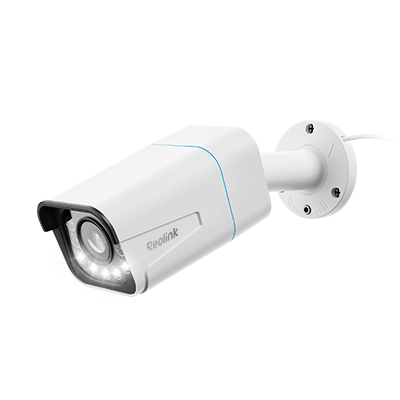With security cameras installed in your grow rooms, you can check your plants in real time but you may feel uncertain about the invisible part: the infrared light given off by night vision cameras.
You can neither see it with naked eyes nor sense it in the way your plants do.
As you may wonder, does security camera infrared light harm plants?
You are not the only one bothering about this problem.
To ease your concern, we will show you how infrared light on security camera affects plants. In addition, tips are also offered to help avoid the side effects of intensified infrared light to your plants.
How Security Camera Infrared Light Work
Before jumping into the question - does security camera infrared light affect plant growth, you should firstly understand how security camera infrared light work.
Infrared lights are applied to realize night vision for security cameras. Infrared lights, or infrared LEDs are built into security cameras around the lens together with IR cut filters.
In daytime, the filters detect daylight and block out the light falling on the image sensor to keep color looking accurate.
During night time, the infrared lights turn on and function as a flood light of sorts when the filters automatically stop working. Infrared light is invisible to unaided human eyes but visible to security cameras with night vision. So that the camera can see clearly at night and capture detailed images even in extra dark environment.
Security Camera Infrared Light Won’t Harm Plants. And Here Are the Reasons
To make a clear explanation, we will focus on whether and how infrared light given off by a night vision camera affects the development of plants.
First, keep in mind that both human and other lives on the earth are immersed in infrared light every day, which is actually a natural phenomenon. Plants growing in natural environment receive much sunlight and a certain amount of far infrared light at dawn and dusk.
The energy brought by security camera infrared light can by no means compare to that of the sun. And that is say, you don’t have to worry about excessive energy from night vision camera casting to plants in grow rooms.
To find out the security camera IR effects on plants, you can analyze from these two factors: wavelength and intensity.
Wavelength: Generally speaking, light with short wavelength is more energetic than that with longer wavelength. Most often seen wavelengths applied in infrared security cameras are 850 and 940 nanometer (nm), which are relatively long wavelengths that carry less energy and radiation.
Research indicates that the chlorophyll reflects most light with wavelength longer than 700 nm. In other words, security cameras with 850 or 940 nm infrared light do not activate the photosynthesis process and interrupt plant growth when it is dark.
Intensity: A highly concentrated and narrow beam of any light, visible or not, can be very dangerous because of very high power. Most security cameras come with 6 to 36 pieces of built-in infrared LEDs circled around the lens. They are capable of illuminating a certain distance with less light intensity.
Some indoor growers also share their experience, saying that they have not found any problems on their plants after installing grow room cameras or garden security cameras with infrared light.
“I have 2 security cameras in my room for over 2 years. Other than a few dicey genetics, I see no problems. All my solid strains have spent entire cycles right in front of the cams with no problems. So I can’t blame the cams for the few herms I have had over that time.”
To sum up, security camera infrared light is generally not that harmful to plants as you conceived. On the contrary, appropriate amount of infrared light can be used to enhance plant growing.
NASA indicates far infrared light plays an important role in plant growing and blooming.
“Leaves developing in a light environment including FR (far infrared light) radiation tend to expand to become larger and thinner. In addition, exposure to infrared light reduces the time a plant needs to flower.”
Note that your plants only grow well under appropriate amount of infrared light. Otherwise, too much infrared light will interrupt normal blooming cycle and even kill them because of extra radiation, namely heat.
To ensure that the radiation level is among an acceptable range, you can check if there are obvious temperature changes in your grow rooms.
Tips to Reduce Effects of Excessive Security Camera Infrared Light to Plant Growth
As we have mentioned above, too much infrared radiation may harm and even kill your plants. To avoid unwanted security camera IR effects to plants, we have compiled a list of alternatives that you can think about when installing security cameras with infrared light.
#1. Place Security Cameras with Infrared Light Not Too Close to Your Plants
Top security cameras with infrared light enable long distance night vision from 100 to 190 feet in low light condition (read this post to learn details of how far security camera can see).
You can place the security camera with infrared light 6 to 12 inches away from the plants since the intensity drops rapidly at such distances.
By doing this, you can not only protect your indoor plants from being burnt and also enjoy the whole view of the plant-growing environment, which offers convenience for you to check whether the ventilation fans are functioning and monitor the temperature inside to ensure that nothing goes wrong.
#2. Check Infrared Light Specifications of Security Cameras
Most security camera manufacturers seldom list infrared light specifications including wavelength, frequency and energy on product pages. These three factors indicate how much radiation the CCTV cameras will bring to your plants.
To confirm whether the security cameras come with strong infrared light, you can ask the security camera manufacturers for more detailed information on the infrared light if it is not available on their product page.
#3. Choose Reliable Security Camera Brands
No-name security camera brands may use inferior infrared LEDs, which are cheaper and produce unstable infrared radiation after long-term usage. Installing no-name security cameras in your grow rooms in fact puts your plants in danger.
When you are looking for security cameras for your grow rooms or gardens, choose reliable security camera brands that offer better products with qualified infrared LEDs.
A Reolink user set up an RLC-811A camera in his pepper growing room so he is able to monitor the environmental conditions and health of the plants when he is away from the grow room.
4K Smart PoE Camera with 5 Spotlights
4K 8MP Ultra HD Day & Night, Person/Vehicle Alerts, 5X Optical Zoom, Two-Way Audio, Built-in Siren, Color Night Vision, Live View Anywhere.
If you have more ideas or problems on the effects of security camera infrared light to indoor plants, please feel free to share with us in the comment below!
Resources:
① NASA: Sole-Source Lighting for Controlled-Environment Agriculture
② ICMag: Can Plants See Infrared Light?
③ Rollitup: Does Security Camera Night Vision Harm Flowering Plants?
④ THCFarmer: Will the infrared lights on my security camera affect my plants?


